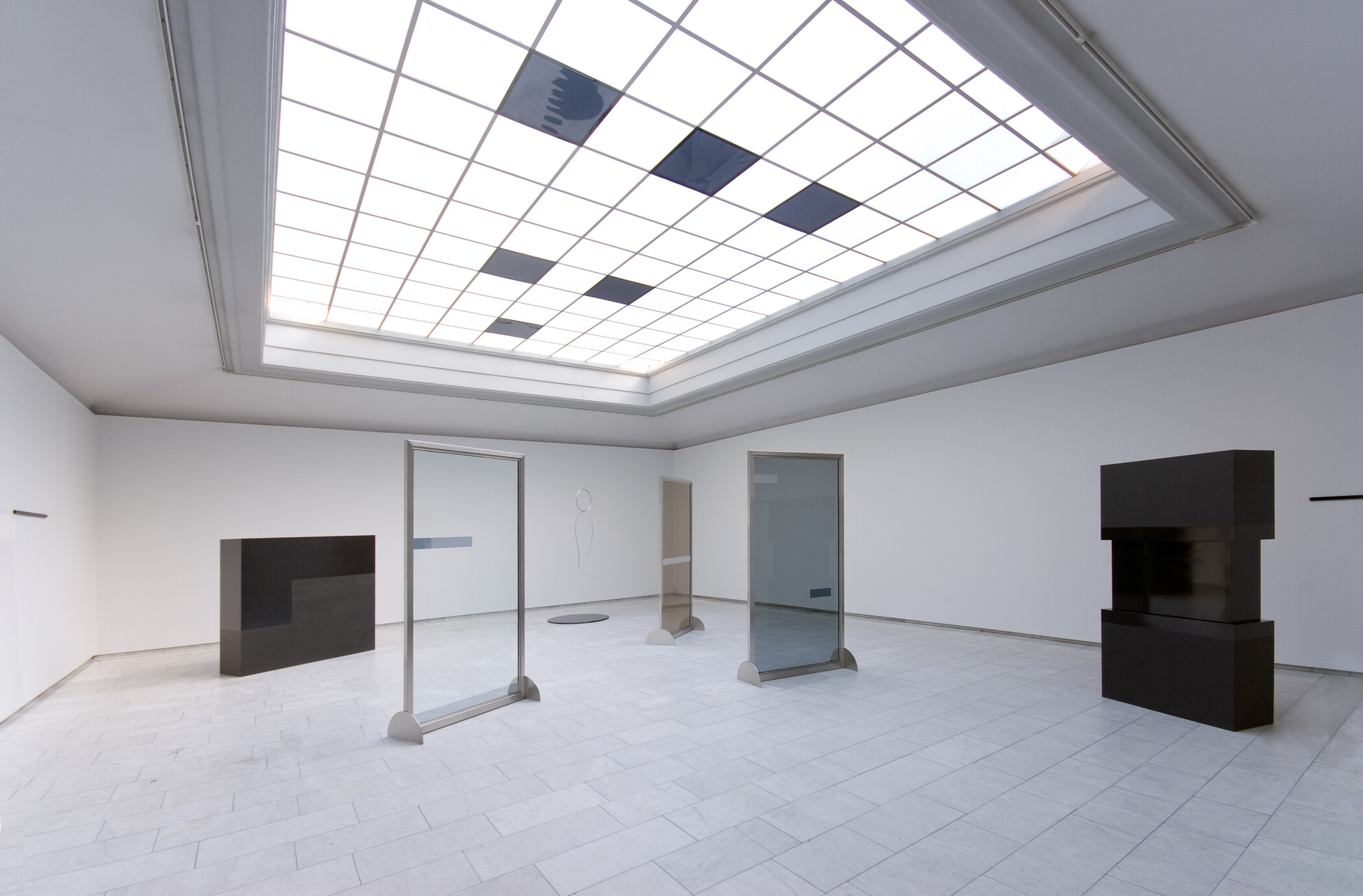Josefine Lyche og Ane Graff viser sitt nye samarbeidsprosjekt ”Remake” i overlyssalen. Prosjektet tar utgangspunkt i ”Fragments of Fear”, en utstilling duoen hadde på galleri 21:24 i 2003. ”Fragments of Fear” var en installasjon som besto av skulptur og veggmaleri. Motivmessig dvelte denne utstillingen ved det mørke, skygger og nett. Formene vekslet mellom matte og blanke overflater og materialer. Alt av arbeider ble holdt i sort/hvitt. ”Remake” er, som tittelen sier, en remake av denne utstillingen. Den nye installasjonen består av monumentale skulpturer. I arbeidene kan man finne klare referanser til minimalismen. Formene fra ”Fragments of Fear” er ikke lenger amorfe, men har funnet sin ”gestalt”.
REMAKE
What is it? It is going backwards and further backwards
The concept of “recursion”, as used by Rosalind Krauss, implies a
temporal process of moving back. The term recursion itself is derived
from the Latin for “a return” and refers to the feedback system on which
computer programming is based. The term is applied in various ways to
mathematics, linguistics and the like, to define or test a situation or
idea by repeatedly applying a set of rules or conditions. Using a mode
to question itself is what makes Krauss’ recursive gesture explicit, as
the work flips back on its own patterns over and over again in order to
move forward:
We march backwards into the future[1]
This is our recursive process:
1. Are we done yet? If so, return the results. Without such a
termination condition a recursion would go on forever.
2. If not, simplify the problem, solve the simpler problem(s), and
assemble the results into a solution for the original problem. Then
return that solution.
Things should be made as simple as possible, but not simpler[2]
According to Occam’s Razor, a principle stated by the nominalist William of Occam, all conditions being equal, the simplest theory is the most likely to be true. In “The Nominal Three (to William of Occam)”, 1964, minimal artist Dan Flavin, inspired by William of Occam, to reduce his work to it’s bare essentials.
“The Nominal Three” is an arrangement of fluorescent tubes in a series of white units that follow the algebraic progression of 1+ (1+1) + (1+1+1), a simple formula of infinite counting arbitrary stopped at the number three. The ‘totality of the possible’ provides the content of the actual piece. In Remake, the exhibition as it exists is set against all the other potential versions of the work.
We look at the present through a rear view mirror[3]
The Recurrence Theorem states that a given image, when sliced and squashed hundreds of times, loses itself and turns into a snow of apparent “random bits”. However, when the process is repeated thousands of times, the image reappears, although at times marred with greater or lesser arbitrary noise and less of itself, the original image.
Whatever the image started out to mean has been clouded in a recurrance process. The effect is a stuttering, halfway presence. Imagine a stranger who has forgotten his name and importunes you, on the off chance that you know it. Only the basic forms of his name’s syllables are left. He is this show.
“But Fidgety Phil / He won’t sit still; / He wriggles / And giggles, / and then, I declare, / Swings backwards and forwards, / And tilts up his chair.”
Om kunstnerne
Ane Graff har
de siste årene gjort seg bemerket som tegner, men arbeider også med
skulptur og fotografiske arbeider. Hun har deltatt i en rekke
utstillinger i inn- og utland, sist på Tegnebiennalen 2008, Kunstnernes
hus og ”Hardcore”, Sørlandets Kunstmuseum. Seneste separatutstilling var
”Fall into Matter” på STANDARD (Oslo), 2007.
Josefine Lyche har på få år etablert seg som en av de unge, norske kunstnere som arbeider stort romlig og inkorporer arkitektur spesifikt i sine verk. Det har gitt henne flere private og offentlige utsmykninger og prestisjefulle utstillinger. Hun var bl.a. med i Carnegie Art Award 2006 og er aktuell med ”Tomorrow Always Belongs to Us” i Gøteborg Kunsthall. Seneste separatutstilling var ”Cosmic Dropout” på 0047 i Oslo, 2007.
Utstillingen er gjennomført med støtte fra Vederlagsfondet.
[1] Marshall McLuhan
[2] Albert Einstein
[3] Marshall McLuhan
